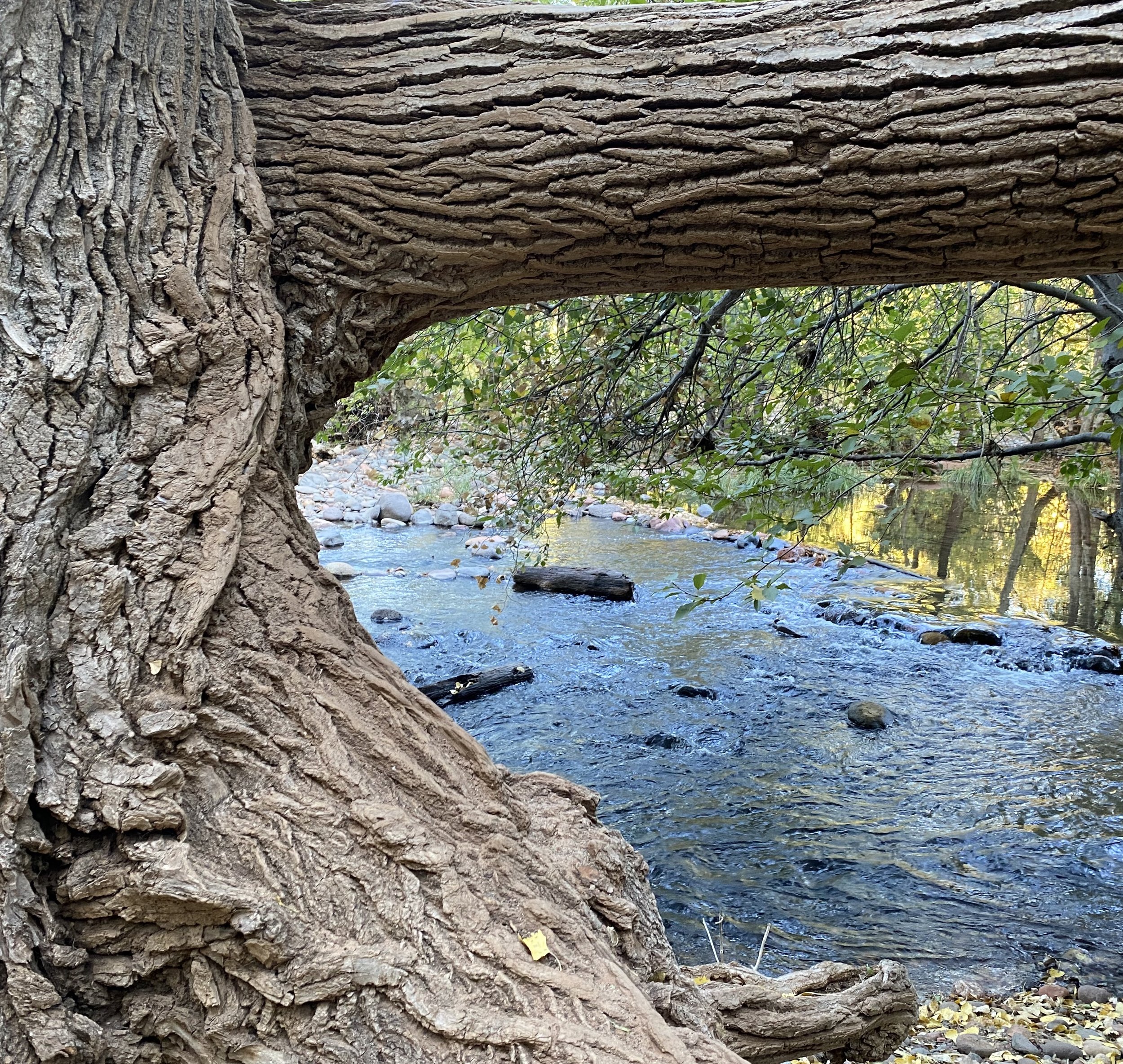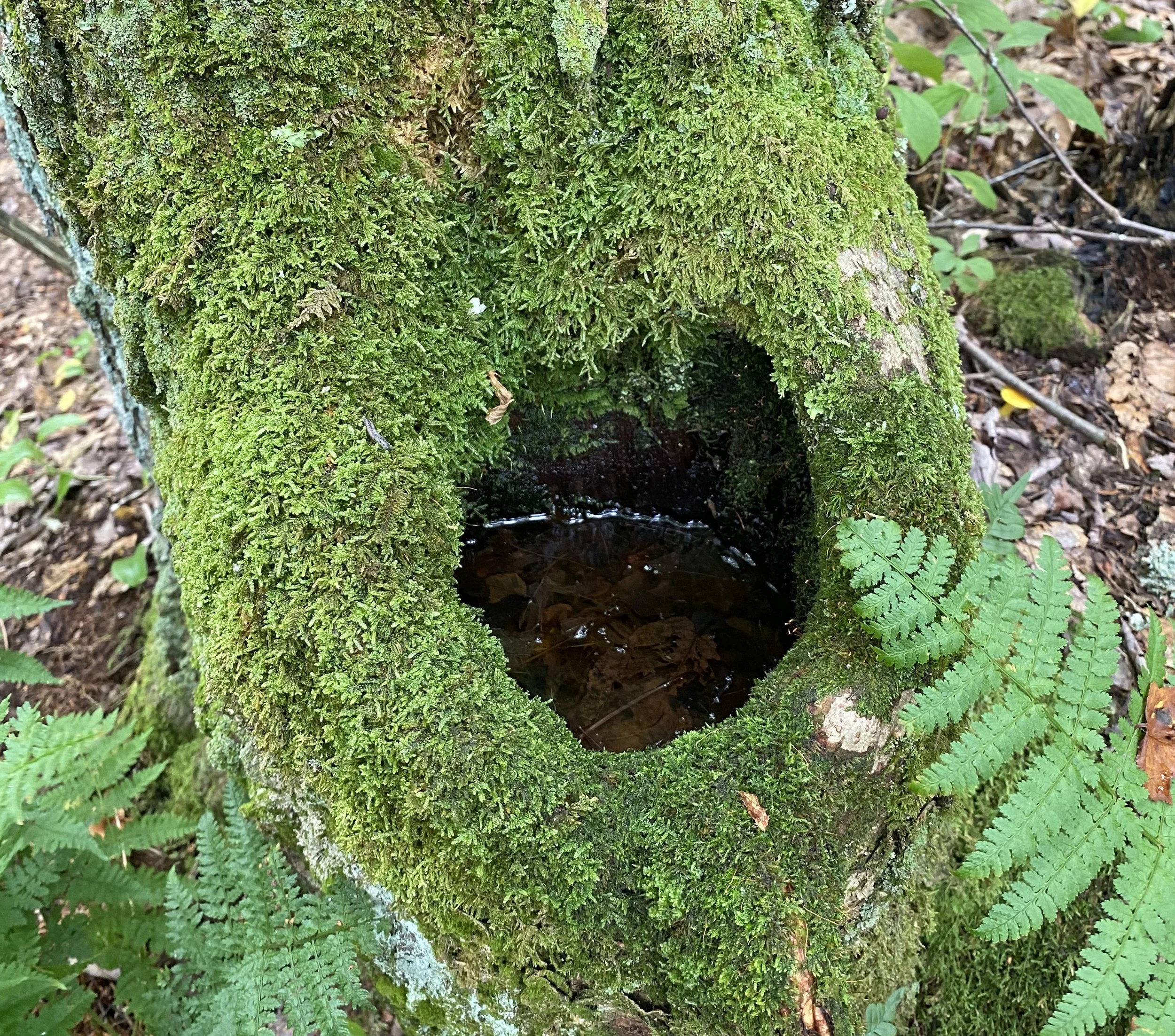slowness opens
Will you go in?
As someone who has practiced, taught, and written in the landscape of slowness for well over two decades, it continues to intrigue me how humans’ increased longing for slowness mirrors a further distancing from it.
In our current collective moment, there’s a heightened crying out for slowness. The howl is palpable. It aches and breaks open, wails its lament, crumbles itself into restless whimper. It’s painful to witness, and also… I trust what’s happening.
I also wail and break open.
For children.
For adults who care for children.
For you, as child.
We have the wanting. We see the need. We have plenty of ways to practice. What is it, then, that delays our experience of slowness?
Might it be that slowness requires the slowness of itself?
That what seems on the surface as heightened urgency for slowing down is simply evidence of all that’s breaking down. And, that the slow decomposition of things—agitated in busyness of heat and fester—are essential to regenerate a landscape earthed in rich soils of slowness.
In Be Slow Now, I wrote:
We claim slowness by accepting its invitation to come inside. We let ourselves feel the expanse of its space—to rest, to listen, to know—and everything begins to shift.
Yes, and…
We must not let our attention continually drift back to the shift—wanting the shift or measuring the shift or telling stories about the shift.
When we focus on the shift, we box ourselves into the confines of what we are in the process of shedding… efficiency, productivity, control, urgency.
Instead, we can attune to the small openings of slowness, feel their emergence and edges, and allow ourselves to listen.
What do you know of slowness?
What do you know of where you go to settle into the softness of yourself?
That place of drift and stretch.
Where you release your breath, feel your bones, remember your skin.
Where you are held as you are.
Where you follow daydream paths woven with ancient thread,
and find yourself expanded beyond your body and also
in your body, rooted and steady where you are.
Slowness opens space for us to connect from within—to remember ourselves back home.
Our inner home is always here. Our desire for slowness is a simple request to reconnect from the separation we feel.
Slowness is always here, too. Slowness is a space. A space with no requirements of time or effort. A space that expands each moment we connect with it and listen.
Slowness opens space for us to connect from within—to remember ourselves back home.
If you’re interested in the idea shared in the sentence—“We must not let our attention continually drift back to the shift—to wanting the shift or measuring the shift or telling stories about the shift.”—you might like to learn more about Buckmister Fuller, including his theorizing of precession.
I’ve been re-reading Radiant Rest: Yoga Nidra for Deep Relaxation and Awakened Clarity by Tracee Stanley. The entire book is valuable reading, but there is one chapter in particular I’d recommend for anyone who struggles to “find the time” for slowness, rest, or spaciousness of care. In Chapter 4, “The Householder’s Flow” (pp 73-85), she shares a beautiful approach along with small shifts of perspective and simple, short practices to embody more rest into your everyday (busy+full) life.
Here are two simple practices you might want to try:
Notice time + big picture
Notice when and how you use or hear the word “slow” and where it shows up connected with time (e.g., trying to make time to go slow, wishing time was slower, wanting more time for something, feeling stress connected with “fast” or “rushing”).
Notice when and how you think or talk about your day in the frame of a “big picture” (e.g., you remember your day as a series of events; when asked about your day you give a generalized answer; you see your week in terms of its calendar; when you’re at a meeting, child’s baseball game, or grocery shopping, you think of it as a whole event to get through).
When you notice elements of your day connected with time or big picture generalizations, especially if they are related to longing or wish for something else, simply acknowledge what you notice. Don’t judge yourself or push anything away. Your focus is only to notice. You may also want to smile (maybe giggle) and say, “I see you.”
Attune to small moments
Think about the ordinary things you do each day (e.g., brush your teeth, rinse the dishes, walk the dog, sit at a particular traffic light, drink water, make lunch, wait by an elevator). Select one or two as a way to begin. When you find yourself entering the moment (e.g., picking up your toothbrush, pushing the elevator button, stopping at the red light), focus on feeling yourself go into ir and notice the details inside it, including yourself for the full space of the moment. When the moment ends, say, “thank you.” The moments you select might be 3 minutes or 3 seconds; it doesn’t matter. You are simply letting yourself be in the space of a moment (instead of moving through the time of it). Note: You can support yourself to remember to attune to moments in this way by leaving little notes for yourself next to the places where you do ordinary things, such as: “I am brushing my teeth” next to the sink, or “I am drinking water” on your glass, or “I am walking the dog” on the leash next to the door.
That’s it? Yes, that’s it.
Slowness doesn’t require effort. It opens from the release of effort.
Consider this possibility: Perhaps it isn’t hard at all to experience slowness. It is easy. And because it is so easy, we resist it. We aren’t used to the feeling of easy, so when we feel it, we tell stories of not being productive or worthy because we (or others) aren’t trying hard enough.
This is why framing slowness as an idea, strategy, or task of time management will always only keep the experience of slowness at a distance. Slowness isn’t something to add to existing structures held by logics of urgency, scarcity, fear, and outcomes of achievement. Slowness opens within the dissolving of these structures, not when it’s boxed on a shelf next to other “wellness” strategies designed to make such structures more palatable.
This includes the structures of our systems (e.g., schools, hospitals, agriculture, technology) and the structures held in our bodies, understandings, and languages. It is from the frequencies of what we hold inside ourselves that we create what we experience in the world.
There’s a question here that begs to be asked: Do we really want slowness for our children, our schools, our communities, and ourselves?
If the answer is yes, we must be willing to dissolve, too. To let go of the things that frame, schedule, and urge us to stay separate from each other and separate from ourselves.
Slowness is here, ready for us attune to its small openings and listen.
Will you dissolve and go in?
*
as delight, Melissa
Are you interested in reading more about slowness and ways to nourish spaciousness for children and yourself?
Creating Space: Designing for slowness, curious play, and inner belonging | August 2023
You as child: Attunement to wholeness as liberation work | July 2023
Learning IS: play is wonder is art is nature | April 2023
Be Slow Now: Why we long to slow down and how to claim slowness as space to rest, listen, and know | October 2022
Some Slowness | December 2020
It’s like breath | February 2024
Small is Enough | November 2024
I love to support others to nourish slowness for themselves and design spaces that honor slow, spacious, curious, and liberated learning for all.
Reach out if you’d like to discuss a potential project or scope of work.





